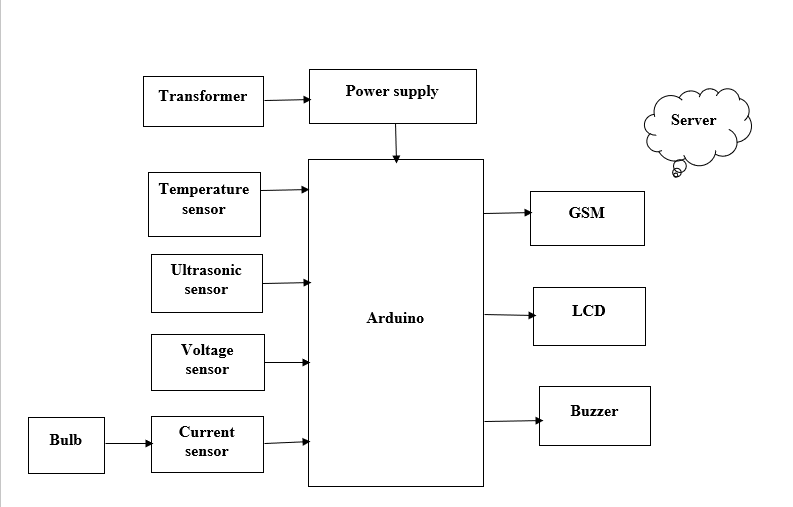Real-time Alert System for Auxiliary Transformer Failures
Objective
The main objective of this project is to give alert for failure of Transformer by overloading issues
Abstract
Auxiliary transformers are used extensively in railway systems. Indian Railways use them primarily to convert the 25-kilo volt AC supply into 230-240-volt AC supply as required for various applications. Due to their varied use, many of these auxiliary transformers are often positioned in remote locations. provide a system that continuously monitors these auxiliary transformers, an automated system based on GSM technology is suggested. This system periodically provides updates and generates immediate alerts in case of the occurrence of the Faults. This SMS containing information about the abnormality regarding oil Content or temperature in transformer. The values are uploaded to cloud server i.e., Thingspeak by using GSM/GPRS.
NOTE: Without the concern of our team, please don't submit to the college. This Abstract varies based on student requirements.
Block Diagram

Specifications
Hardware Requirements
- Arduino
- Transformer
- Current Sensor
- Ultrasonic Sensor
- Temperature Sensor
- GSM
- LCD
- Buzzer
- Bulb
Software Requirements
- Arduino IDE
- Embedded C
Learning Outcomes
- Arduino pin diagram and architecture
- How to install Arduino IDE software
- Setting up and installation procedure for Arduino
- Introduction to Arduino IDE
- Basic coding in Arduino IDE
- Working of Current Sensor
- Interface Current Sensor with Arduino?
- Working of Ultrasonic Sensor
- Interface Ultrasonic Sensor with Arduino?
- Working of Temperature Sensor
- Interface Temperature Sensor with Arduino?
- Working of GSM
- Interface GSM with Arduino?
- Working of Buzzer
- Interface Buzzer with Arduino?
- Working of LCD
- Interface LCD with Arduino?
- Working of Bulb
- Interface Bulb with Arduino?
- Working of Transformer
- Working of power supply
- About Project Development Life Cycle:
- Planning and Requirement Gathering (software’s, Tools, Hardware components, etc.,)
- Schematic preparation
- Code development and debugging
- Hardware development and debugging
- Development of the Project and Output testing
- Practical exposure to:
- Hardware and software tools.
- Solution providing for real time problems.
- Working with team/ individual.
- Work on Creative ideas.
- Project development Skills
- Problem analyzing skills
- Problem solving skills
- Creativity and imaginary skills
- Programming skills
- Deployment
- Testing skills
- Debugging skills
- Project presentation skills
- Thesis writing skills





 Paper Publishing
Paper Publishing
